Most modern devices run on batteries. A battery stores charge and then supplies it to power any electronic device. Although batteries are easy to use, their use also requires some care. A major problem with using batteries is their excessive discharging and overcharging. Both issues affect battery life and cost the end user unnecessarily. These issues are also often ignored by users. Improper handling of batteries shortens their useful life and can even cause an explosion. Ultimately, this increases the cost of maintaining electronic devices.
In this electronic project, a zener diode based circuit will be designed to protect the battery from overcharging. When a battery is charged, its terminal voltage, that is, the voltage between the battery's anode and cathode, increases. At full charge, the terminal voltage reaches a peak value that is an indication of 100% charge. Charging a battery beyond its maximum level causes permanent or temporary damage to the battery.
It is possible that overcharging may cause the battery to lose its ability to recharge again or the battery may even explode due to overcharging. The percentage or level of charge of a battery is therefore estimated by its terminal voltage. The battery must be disconnected from the charger circuit as soon as the terminal voltage spike is detected or the battery is fully charged. Therefore, there must be a protection circuit that can monitor the charge level of the battery by detecting the terminal voltage and protecting the battery from overcharging by cutting the battery's connection with the charger.
In this electronic project, a power circuit is designed which will detect the upper limit of terminal voltage by the use of a suitable Zener diode and cut off the connection of the battery with the charging device by the use of a relay. The circuit also includes an LED indicator section that will illuminate the LED as the battery charges to its maximum value and does not require recharging.
Specifically, in this project two lithium-ion batteries connected in series will be taken as the power source. In most commonly used portable electronic devices such as laptops, smartphones and others, lithium-ion batteries with a peak limit of 4.2V terminal voltage are used. As in this project, batteries with a cut-off limit of 4.2 V are used for power supply, so, using two batteries in series, adjust the cut-off limit to 8.4 V. Practically, the protection circuit designed in this electronic project cuts the battery from the charger when the battery voltage exceeds 8.37 V.
Thus, a zener diode circuit with 8.4V drop in reverse bias condition is used to detect the cutoff limit in the circuit design. The Zener circuit can be designed in several ways. A single zener diode can be used or a combination of zener diodes can be used to achieve the desired voltage drop in reverse bias condition. Another option is to use a normal diode in combination with the zener diode used in this project. The diode circuit will be used to drive a switching transistor that will operate the relay.
As the battery terminal voltage exceeds 8.4 V, the diode circuit will enter a conducting state, activating the switching transistor and changing the relay state to cut off the charger's power supply. After understanding the working of this design, the protection circuits for other cut-off limits can also be designed by proper selection of zener diode and relay with the same circuit.
Required components
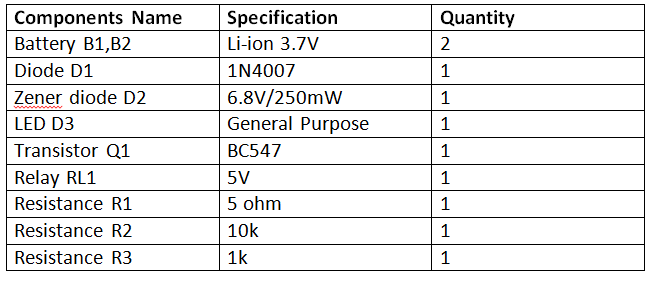
Fig. 1: List of components required for battery overcharge protection circuit with automatic cut-off
Block diagram –

Fig. 2: Battery Overload Protector Block Diagram
Circuit Connections –
The circuit designed in this project has the following circuit sections –
1) Zener diode circuit to detect battery cut-off terminal voltage
2) Transistor circuit to operate the relay
3) Diode circuit for reverse current protection
4) LED indicator circuit for full battery charge indication
1) Zener Diode Circuit – Zener diode circuit can be constructed in several ways. Let us consider three ways to design the zener diode circuit –
a) Taking a zener diode equivalent to the desired voltage cut-off – As the zener diode circuit will be used to drive a switching transistor, the voltage drop across the transistor must be considered. A single zener diode having the reverse voltage peak equivalent to the desired voltage drop minus the voltage drop across the switching transistor circuit can be used. In this way, the required voltage drop rating can be calculated as follows –
Voltage cut, Vcut = 8.4 V
Vcut = voltage drop across the Zener diode (D1) + voltage drop across the transistor (Q1) (Vbe)
8.4 = voltage drop across the Zener diode (D1) + 0.7
Voltage drop across Zener diode = 8.4 -0.7
Voltage drop across Zener diode = 7.7 V
Therefore, for a voltage cutoff of 8.4 V, a zener diode with a rating of 7.7 V must be selected.
b) Taking a combination of zener diodes – As the voltage drop in the zener diode circuit should be 7.7 V. Therefore, if a zener diode with exact peak reverse voltage of 7.7 V is not available, a combination of zener diodes connected in series can be used. For example, two zener diodes rated at 3V and 4.7V can be used.
c) Using normal diode with zener diode – The voltage drop in the zener circuit can be equated to 7.7 V by connecting a typical diode in forward bias in series with the zener diode. For example, a 7V zener diode can be used in series with a 1N4007 diode. The 1N4007 diode has a forward voltage drop of 0.7 V, so it will provide an extra drop of 0.7 V. This will produce exactly 7.7 V, which is the required voltage cut in the circuit. The same method is used in designing this battery overcharge protection circuit.
The regular diode is connected in forward bias configuration with its anode connected to the battery anode and the cathode connected to the cathode of the zener diode. The zener diode is connected in series with the normal diode in reverse bias configuration with anode connected to the base of the switching transistor and cathode to the cathode of the normal diode. Until the terminal voltage of the battery is below the cut-off threshold and the peak reverse voltage of the zener diode, the zener diode will remain in the non-conducting state, but as the terminal voltage will rise above the cut-off and the peak reverse voltage of the zener diode, it will enter into conduction state.
2) Transistor circuit – The transistor circuit is used to operate the relay. A switching transistor is used as a high side switch in the circuit where the transistor is operating as a logic inverter. The anode of the zener diode is connected to the base of the transistor Q1, the emitter of the transistor Q1 is connected to ground while the collector of the transistor is connected to the relay coil that controls the power supply to the battery charger.
3) Diode Circuit – A diode circuit is connected parallel to the relay coil for protection against relay back current. The countercurrent from the relay coil discharge can permanently damage the battery, so this diode circuit is used for countercurrent protection.
4) LED indicator circuit – The LED indicator circuit is connected to the NC point of the relay. When the transistor circuit switches the relay to the NC point, the LED is forward biased as the anode of the LED is connected to the NC point of the relay and the cathode is connected to ground. A current limiting resistor is connected in series with the LED to prevent any damage to the LED from excessive voltage.
How the circuit works –
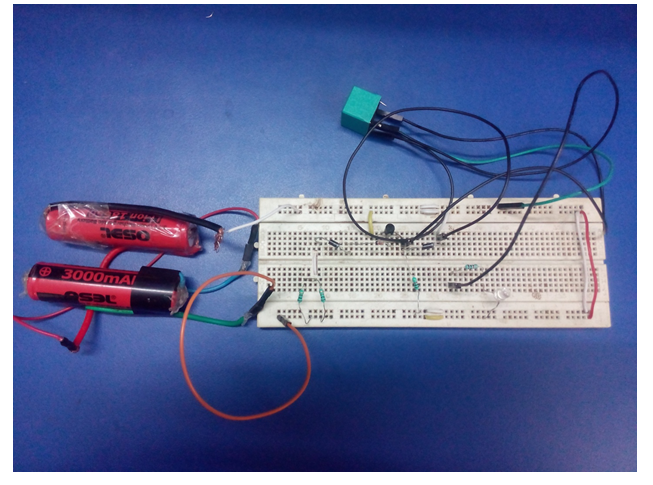
Fig. 3: Battery overcharge protector prototype designed on a breadboard
The circuit is based on the operation of the zener diode. A zener diode, when connected in reverse bias configuration and its cathode voltage is below its breakdown voltage, then the zener acts as an open circuit. But when a voltage above the breakdown of the zener is applied at its cathode terminal, the zener starts conducting from the cathode to the anode in reverse bias condition. Since the zener diode can also work in reverse bias, this feature of the zener diode is useful in detecting the cut-off in the battery voltage level.
There are two Li-ion batteries connected in series, so they have a total peak terminal voltage of 8.4V. When the two Li-ion batteries are connected to the charger, there can be two cases as follows –
The battery terminal voltage may be below 8.4 V. When the battery voltage is below 8.4 V, the cathode of the zener diode (D1) will be below 6.8 V. The D1 diode will begin to conduct and there will be a drop between D1 and Q1. In this case, the zener diode will remain in a non-conducting state and will not conduct current from the cathode to the anode terminal (as shown in the image below). As the base of transistor Q1 is connected to the zener anode (as shown in the image below). Therefore, the base of transistor Q1 will not receive the required voltage and will function as an open circuit. Therefore transistor Q1 works as a logic inverter. When the zener diode is in a non-conducting state and there is not enough voltage at the base of the transistor, the collector current is short-circuited to ground through the emitter and the collector voltage drops.
In practice, it is observed that although the zener below 8.25 V does not conduct, but still has some current (in microamperes) that flows from its cathode to the anode, this current is the Zener leakage current.
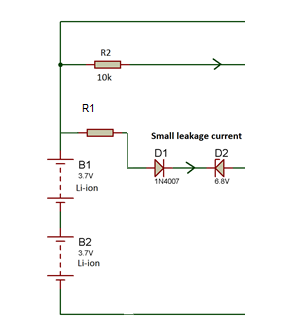
Fig. 4: Circuit diagram showing the Zener diode section of the battery overcharge protector
Generally, as the current in the base of the transistor begins to increase, it acts as a variable resistance, the value of this resistance begins to decrease as the current increases. Considering the BC547 transistor, the voltage between the base and emitter is between 0.65 V and 0.7 V, so the transistor will act as a short circuit. The transistor (BC457) has a minimum gain of 110, so the base of the transistor needs much less current to conduct. Thus, transistor Q1 will amplify the leakage current from microamps to milliamps and the current in milliamps will start flowing from the collector to the emitter (as shown in the image below). Therefore, the Zener leakage current will also turn on transistor Q1. But in this state, Q1 is not fully ON as the base to emitter so far does not reach 0.65V.
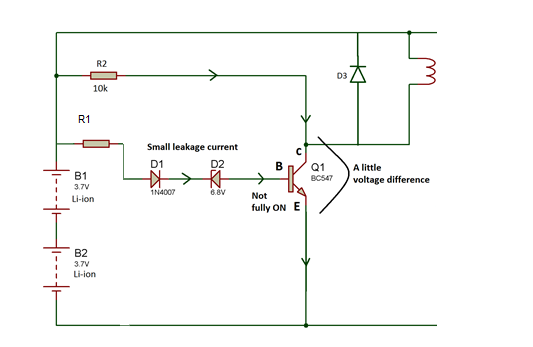
Fig. 5: Circuit diagram showing high side switch operating on battery overload protector
The collector of transistor Q1 will provide ground to the relay (RL1) so that the relay can be driven. But in this case, as Q1 is not fully turned on, there will be some voltage drop between the collector and emitter of transistor Q1. Therefore, in this case, the relay will not be activated and the battery will remain in a state of charge through the charger. The output LED also remains off (as shown in the image below).
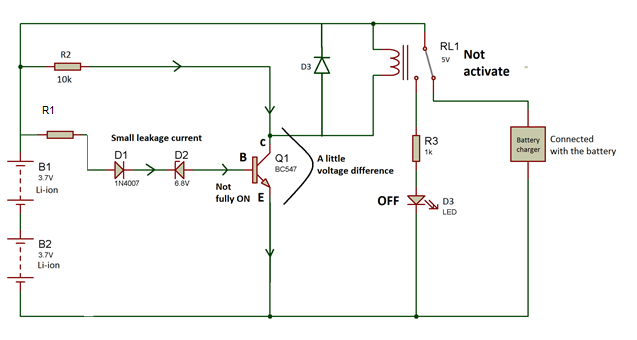
Fig. 6: Circuit diagram showing the handy high side switch working on the battery overload protector
The other case can be when the terminal voltage of the battery is below 8.37 V. When the battery voltage is above 8.37 V, the diode D1 will start conducting and the zener diode will break down. Therefore, in this state, the zener diode will allow current to flow from its cathode to the anode terminals (as shown in the image below).
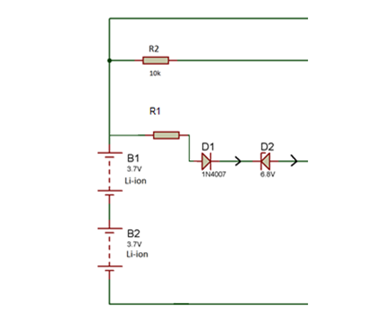
Fig. 7: Circuit diagram showing Zener diode working in battery overload protector
As the base of transistor Q1 is connected to the zener anode (as shown in the image below). Therefore, transistor Q1 will start conducting and act as a short circuit. Therefore, all the current from the collector of Q1 will be shorted and start flowing from the collector of Q1 to its emitter and finally to ground.
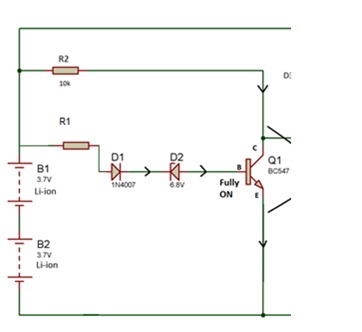
Fig. 8: Circuit diagram showing relay operation in battery overload protection
Therefore, the voltage difference between the collector and emitter is zero as all the current is drained to ground. This will activate the relay. Therefore, the charger which is on the NC (normally closed) pin will be disconnected from the battery. The LED on the NO (normally open) pin of the relay lights up and will indicate battery overload.
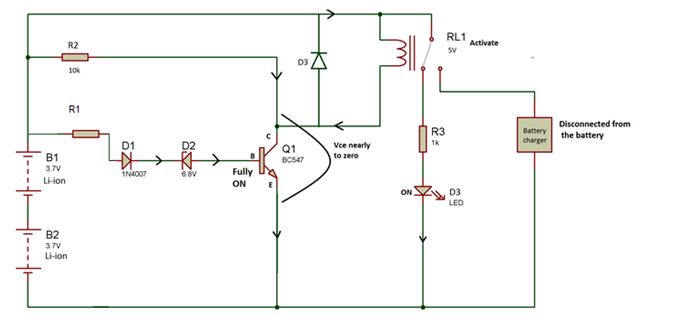
Fig. 9: Circuit diagram showing complete operation of battery overcharge protection
Use of series resistance (R1) with Zener diode and other components
A Zener diode requires a series resistance that limits the current flow through it above its rated current, which will prevent the Zener diode from overheating. With the use of series resistance, the Zener can also provide a regulated voltage at the output. A resistor R2 is connected to the collector of transistor Q1 and resistor R3 is connected to the LED. The purpose of these resistors is just to limit the transistor and LED current. This will prevent any damage to the components.
Selecting the series resistance of the Zener diode (R1)
In this project, the zener diode used is rated at 6.8 V. When the voltage exceeds 8.4 V, the circuit will disconnect the battery from the charger. Although the rise in voltage is very less, but to ensure safety, the maximum voltage cut-off can be 8.5 V. The series resistance of the zener diode can be calculated by the following equation –
R1 = (Vs-Vz)/Iz
Where Vs = maximum supply voltage
Vz = (Total voltage across zener (D2) + 1N4007 diode (D1) + drop in zener resistance (R1) + transistor (Q1))
Iz = Zener current
To calculate the value of resistance R1, the Zener current can be calculated by the following method –
Maximum power dissipation of the Zener diode, Pz = 250 mV
Vz=8.4V
Maximum Zener current, Iz can be calculated as follows
Pz = Vz * Iz
Iz = Pz/Vz
Iz = 0.25/8.4 V
Iz = 29 mA (approx.)
Now, from the above equation, resistance can be calculated as
V = 8.5V
R1 = (Vs-Vz)/Iz
R1 = (8.5-8.4)/0.029
R1 = 3.5 ohms (approx.)
But in the experiment, the resistance R1 is considered to be 5 ohms just to be safe. Zener series resistance selection must be chosen wisely so that it does not allow current exceeding the Zener rating. As more current will permanently damage the zener diode.
The different voltage readings obtained from the circuit are summarized in the following table –
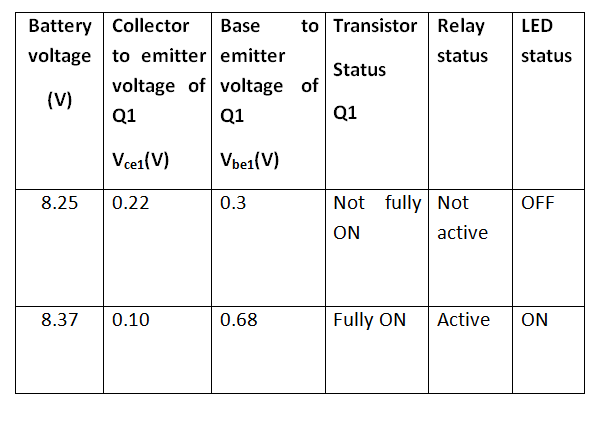
Fig. 10: Table listing different voltage readings obtained from the circuit
Checking the practical value of the voltage cut-off can be determined by the drop in the other components using the following equation –
Practical observation, Vcut = voltage drop across the Zener diode (D2) + voltage drop across the transistor (Q1) (Vbe) + voltage drop across the series resistance (R1) + voltage drop across the diode (D1)
In the equation above, when adding the diode (D1) what does not exist in the theoretical observations also drops
Practical observation,Vcut= 6.8 + 0.68 + 0.2 + 0.69
Practical observation, Vcut = 8.37V
From the above practical observation, it can be analyzed that the practical voltage at which the battery disconnects from the charger is 8.37V. Therefore, the battery will be disconnected when the battery voltage of each lithium-ion battery is at approximately 4.2V.
Use of diode (D3)
As the relay internally has an inductor coil, this coil stores some charge when the relay is activated or energized. When the relay is de-energized, the polarity of the relay is reversed and a reverse current will flow from the coil, which can damage the circuit. Therefore, a diode (D3) is used across the relay to prevent circuit backcurrent when the relay is de-energized. This diode is known as a fly back diode or freewheeling diode. The inductor will discharge through this diode and this will prevent the other circuit from receiving any counter current.
It is important that the relay's nominal voltage is lower than the battery's cut-off voltage. For example, if a 9V relay is used in the circuit, it will never be energized at 8.4V. That is why 5V relay is used in the circuit.
Circuit diagrams
| Battery Overcharge Protector Circuit Diagram | 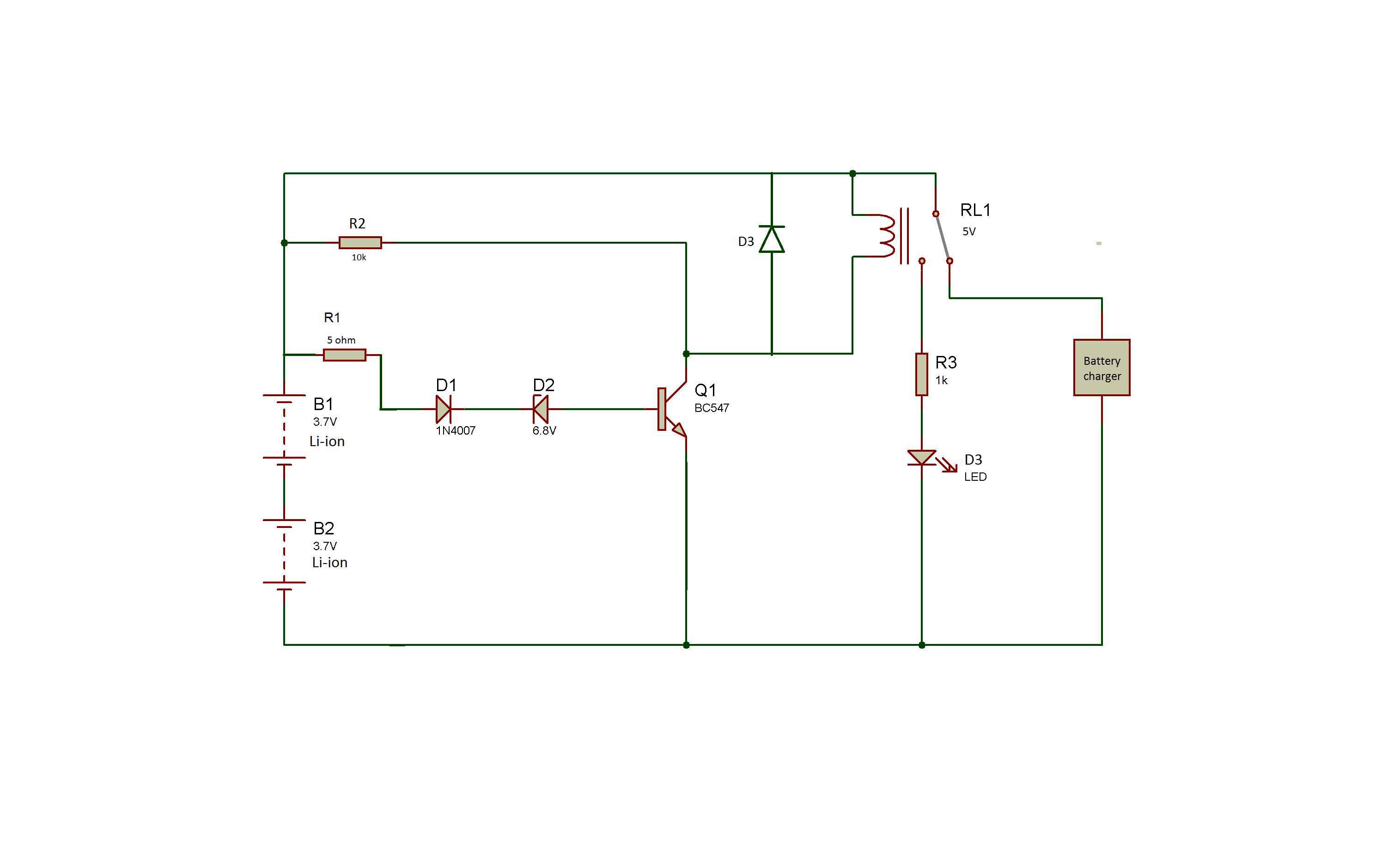 |

